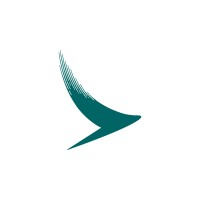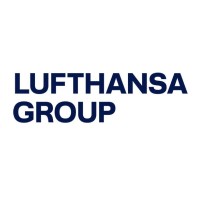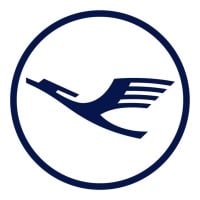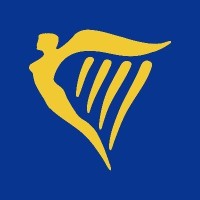Company Cyber Security Posture
NANA
NA Company Details
NA
NA
NA
NA
NA
NA
Scan still pending
NA
NA
Between 200 and 800
This score is AI-generated and less favored by cyber insurers, who prefer the TPRM score.
 NA Global Score
NA Global Score.png)

Company Scoring based on AI Models
| Model Name | Date | Description | Current Score Difference | Score |
|---|---|---|---|---|
| AVERAGE-Industry | 03-12-2025 | This score represents the average cybersecurity rating of companies already scanned within the same industry. It provides a benchmark to compare an individual company's security posture against its industry peers. | N/A | Between 200 and 800 |
Company Cyber Security News & History
| Entity | Type | Severity | Impact | Seen | Url ID | Details | View |
|---|
Company Subsidiaries

NA
Access Data Using Our API

Get company history
.png)
NA Cyber Security News
Cyber Security Threat Detected at Kuala Lumpur International Airport: Malaysia Airports
A cyber security threat affecting computer systems at the Kuala Lumpur International Airport was detected on Sunday, the National Cyber Security ...
Malaysian Airport's Cyber Disruption a Warning for Asia
The ransomware attack on Kuala Lumpur International Airport follows several attacks against other targets in Malaysia and in the region. Last ...
Malaysia PM says country rejected $10 million ransom demand after airport outages
Computer outages at Malaysia's Kuala Lumpur International Airport (KLIA) this weekend were attributed to a recent cyberattack, according to ...
Kuala Lumpur Airport Hit by Cyberattack, Hackers Demand $10M Ransom
Kuala Lumpur International Airport (KLIA), one of Southeast Asia's busiest airports, was hit by a major cyberattack over the weekend.
‘No way’: Malaysia’s PM refuses US$10 million ransom demand after cyberattack
Officials said the weekend cyberattack had affected certain computer systems at the Kuala Lumpur International Airport.
KLIA confirms cyber incident
A cybersecurity threat affecting certain computer systems at Kuala Lumpur International Airport (KLIA) was detected by Malaysia Airports on ...
MAHB Cyberattack: Hackers Demand US$10 Million Ransom
Malaysia Airports Holdings Berhad (MAHB) recently became the target of a cyberattack, causing disruption to its digital systems. The MAHB cyberattack, which ...
Shocking Cyber Threat at KLIA, MAHB and Nacsa Step In to Protect Systems
Malaysia Airports Holdings Berhad (MAHB) and the National Cyber Security Agency (Nacsa) confirm a cybersecurity threat at KLIA, ensuring airport ...
Malaysian PM says "no way" to $10 million ransom after alleged cyber attack against Kuala Lumpur airport
Malaysian Prime Minister Anwar Ibrahim has said that he refused to pay a US $10 million ransom demanded by hackers who, according to some ...

NA Similar Companies

GOL Linhas Aéreas
Somos a maior Companhia Aérea do País e estamos entre as que mais crescem no mundo. A nossa história começou em 2001 e, desde então, somos responsáveis por inovar o mercado da aviação no Brasil. Tudo isso graças à dedicação do nosso Time para garantir o nosso Valor número 1, a Segurança, entregand

Cathay Pacific
Welcome to the official Cathay Pacific LinkedIn page. We have over 200 destinations in our global network, but want to do more than just move you from A to B. We want to take you further in your journey, and ultimately, to move beyond. And we’re here to do what we can to help you discover what’s nex

Lufthansa Group
The Lufthansa Group is an aviation company with operations worldwide. It plays a leading role in its European home market. With 109,509 employees, the Lufthansa Group generated revenue of EUR 32.770m in the financial year 2022. The Passenger Airlines segment includes, on the one hand, the network a

Lufthansa
Lufthansa is one of the world's largest and most prestigious airlines. With hubs in Frankfurt and Munich, we currently fly to 211 destinations in 74 countries. As an industry innovator, we have long been committed to environmental care and sustainability, operating one of the most technologically-

Ryanair - Europe's Favourite Airline
Ryanair Holdings plc, Europe’s largest airline group, is the parent company of Ryanair DAC, Lauda, Buzz and Ryanair UK. Carrying 160m+ guests p.a. on over 3,000 daily flights to/from 225 airports. Plan to carry 225m+ guests p.a. by 2026. Unfortunately, we are unable to answer customer service que

Etihad
Marhaba! Welcome to Etihad Airways. We are proud to be the national airline of the UAE, flying to Abu Dhabi or onwards to over 70 global destinations. Our passion is to help people reach unmissable places, where they’ll make unforgettable memories. Our aim is to provide our passengers with unbeata

Frequently Asked Questions
Explore insights on cybersecurity incidents, risk posture, and Rankiteo's assessments.
NA CyberSecurity History Information
How many cyber incidents has NA faced?
Total Incidents: According to Rankiteo, NA has faced 0 incidents in the past.
What types of cybersecurity incidents have occurred at NA?
Incident Types: The types of cybersecurity incidents that have occurred include .
Additional Questions
What Do We Measure?
















Every week, Rankiteo analyzes billions of signals to give organizations a sharper, faster view of emerging risks. With deeper, more actionable intelligence at their fingertips, security teams can outpace threat actors, respond instantly to Zero-Day attacks, and dramatically shrink their risk exposure window.
These are some of the factors we use to calculate the overall score:
Identify exposed access points, detect misconfigured SSL certificates, and uncover vulnerabilities across the network infrastructure.
Gain visibility into the software components used within an organization to detect vulnerabilities, manage risk, and ensure supply chain security.
Monitor and manage all IT assets and their configurations to ensure accurate, real-time visibility across the company's technology environment.
Leverage real-time insights on active threats, malware campaigns, and emerging vulnerabilities to proactively defend against evolving cyberattacks.




